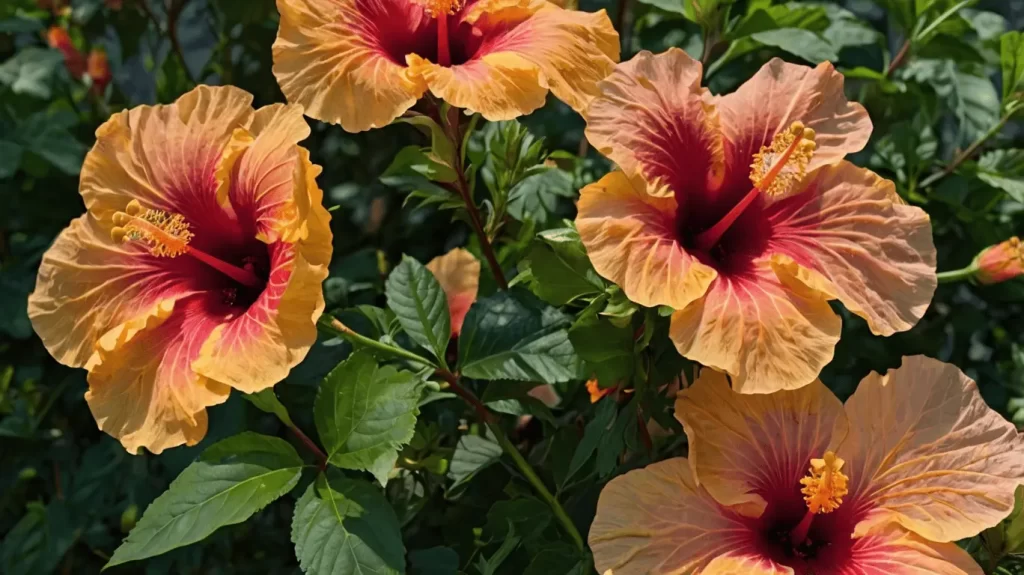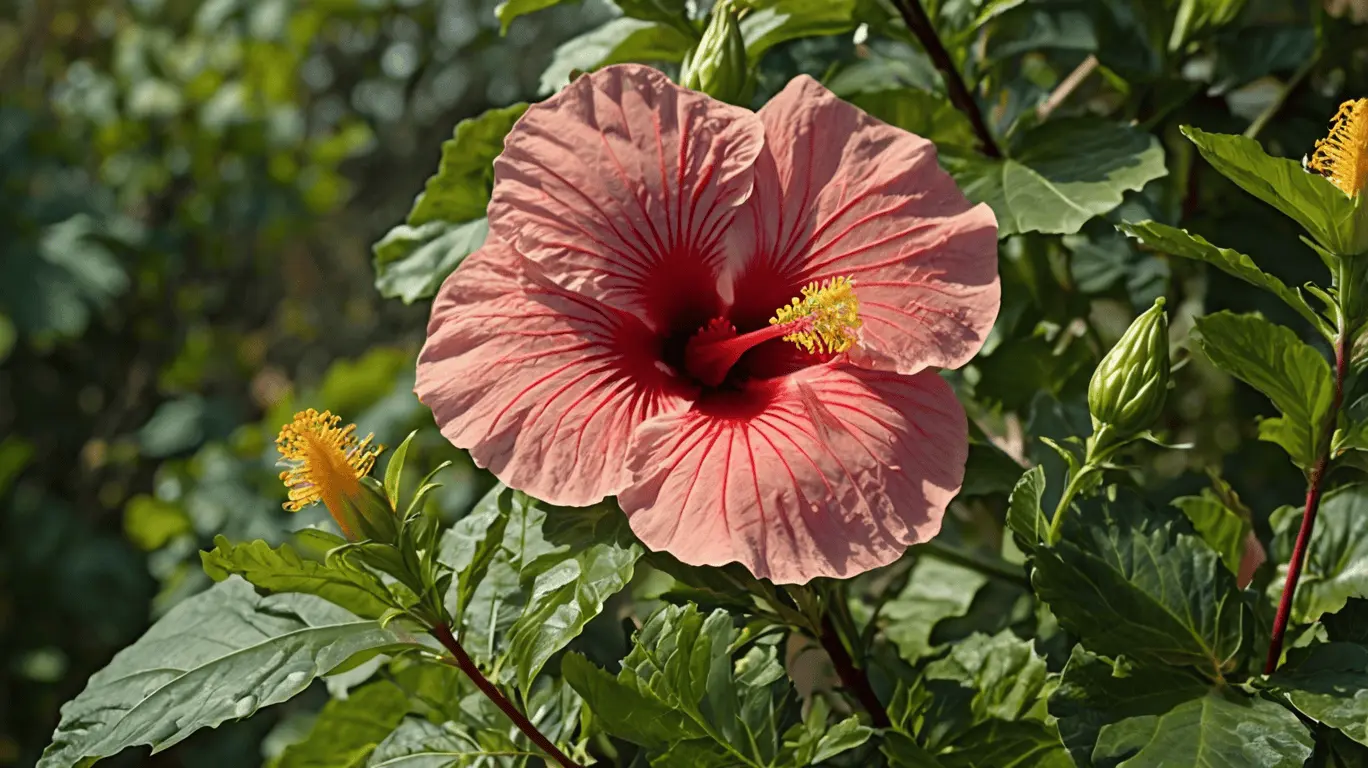Hibiscus is a tropical plant known for its striking and colorful flowers, making it a favorite among garden enthusiasts. However, if you’re noticing that the buds on your hibiscus are forming but dropping off before they bloom, you’re not alone. This issue can be perplexing, especially for those who have been successfully growing hibiscus for years. If your hibiscus blooms are falling before they open, it’s important to identify the underlying causes and apply the proper solutions.
In this comprehensive guide, we’ll explore the most common reasons for hibiscus bud drop and provide actionable steps to restore your plant’s health.
Why Are My Hibiscus Buds Falling Off?
Hibiscus blooms falling off prematurely can be due to several reasons, from watering issues to pest infestations. Here are the four most common causes and how you can address each one.
1. Improper Watering
One of the primary reasons for hibiscus bud drop is improper watering. Hibiscus plants thrive in well-drained, moist soil. They require consistent watering but not too much, as either overwatering or underwatering can lead to bud loss.
Overwatering leads to root rot, which weakens the plant and causes its blooms to fall off. When the soil is too saturated, the roots can suffocate, making it difficult for the plant to absorb nutrients. On the other hand, underwatering causes the plant to become dehydrated, resulting in wilting leaves and fallen buds.
Solution:
- Water your hibiscus regularly but ensure the soil is well-drained. The top inch of the soil should feel moist but not soggy.
- To prevent root rot, make sure the pot has adequate drainage holes.
- If the leaves appear wilted, check the moisture level of the soil and adjust your watering routine accordingly.
2. Excessive Heat Stress
While hibiscus is a tropical plant and enjoys warm temperatures, extreme heat can stress the plant and cause bud drop. Hibiscus plants prefer temperatures between 60°F and 90°F. If temperatures exceed this range, especially during a heatwave, the plant may not be able to handle the excessive heat and will shed its blooms prematurely.
Solution:
- If you’re experiencing a heatwave, move your hibiscus to a shaded area or provide partial shade during the hottest parts of the day.
- Water the plant more frequently during periods of extreme heat, ensuring the soil stays moist without becoming waterlogged.
- Once the weather cools down, your hibiscus should stop dropping its buds, and the flowers will bloom properly.
3. Pests Infestation
Several pests can harm hibiscus plants, leading to bud drop. The two most common culprits are thrips and hibiscus midges. These pests attack the buds before they bloom, causing them to fall off.
- Thrips: These are tiny insects that often feed on hibiscus buds, resulting in damaged or fallen buds before they open. Thrips are difficult to spot because of their small size but can be detected by inspecting unopened buds.
- Hibiscus Midges: These pests are particularly troublesome as they lay eggs inside the buds. Once the larvae hatch, they feed on the inner parts of the bud, causing it to drop. Hibiscus midges are also difficult to see with the naked eye but can wreak havoc on the plant.
Solution:
- Inspect the buds regularly for signs of pests. If you suspect thrips, gently remove a yellowing bud and tap it on a piece of white paper. If tiny black specks appear, you likely have a thrip infestation.
- To control thrips, use an insecticide containing permethrin or bifenthrin. Spray the affected buds and surrounding areas.
- If hibiscus midges are the problem, consider using an insecticide specifically formulated for these pests. Removing and disposing of affected buds can help limit the spread of larvae.
4. Over-Fertilization
Another common reason for hibiscus bud drop is over-fertilization. While hibiscus plants benefit from regular feeding, too much fertilizer—especially fertilizers rich in phosphorus—can damage the plant and cause buds to fall off.
Hibiscus plants thrive with fertilizers that have a high potassium content, as this encourages healthy blooms. Excessive phosphorus, on the other hand, can inhibit the plant’s ability to absorb essential nutrients, leading to weakened buds.
Solution:
- Reduce the frequency of fertilization if you suspect you’ve been overfeeding your plant.
- Opt for a potassium-rich fertilizer and avoid those with high phosphorus content.
- Feed your hibiscus sparingly, following the package directions, and avoid fertilizing during the winter months when the plant is dormant.
Additional Tips for Healthy Hibiscus Blooms

To ensure your hibiscus continues to thrive and bloom, follow these extra care tips:
1. Maintain Ideal Growing Conditions
Hibiscus plants are sensitive to their environment. To prevent further bud drop, keep your plant in conditions that mimic its natural tropical habitat. Humidity is crucial for hibiscus plants, so mist the plant regularly or place it near a humidifier if you’re growing it indoors.
2. Prune Regularly
Consistent pruning promotes fresh growth and maintains the plant’s vitality. Remove dead or damaged branches, and trim the plant after blooming to encourage more flowers.
3. Repot When Necessary
If your hibiscus outgrows its pot, it may become root-bound, which can lead to stress and bud drop. Repot your hibiscus every 2-3 years, using fresh soil and a slightly larger pot.
4. Protect from Frost
Although hibiscus plants enjoy warm climates, they are sensitive to cold. If you live in a region where temperatures drop significantly in the winter, bring your hibiscus indoors or cover it to protect it from frost.
Conclusion
If your hibiscus buds are falling off, it can be frustrating, but with the right care and attention, you can resolve the issue and restore your plant to its full blooming glory. By addressing the most common causes—improper watering, heat stress, pests, and over-fertilization—you’ll soon see your hibiscus thriving again.
Maintaining the proper balance of water, temperature, and nutrients, along with keeping an eye out for pests, is key to preventing bud drop. With a little patience and some adjustments, your hibiscus will reward you with vibrant, long-lasting blooms.

